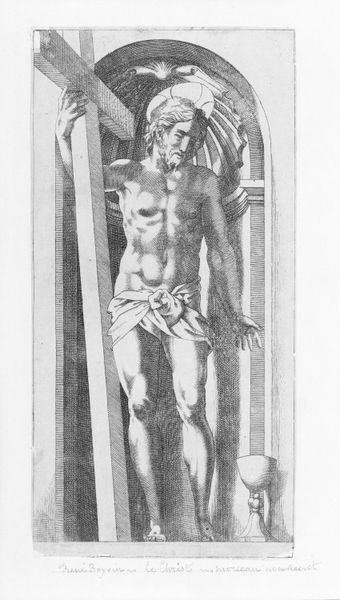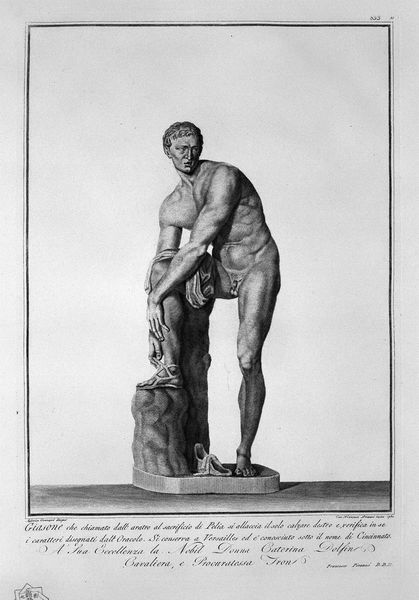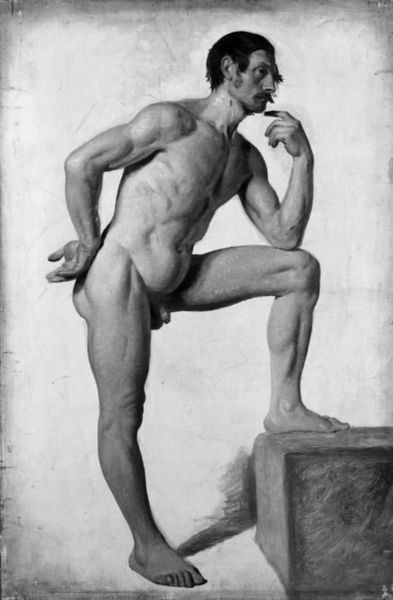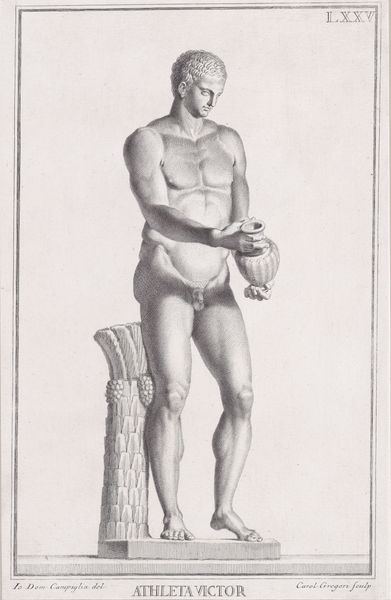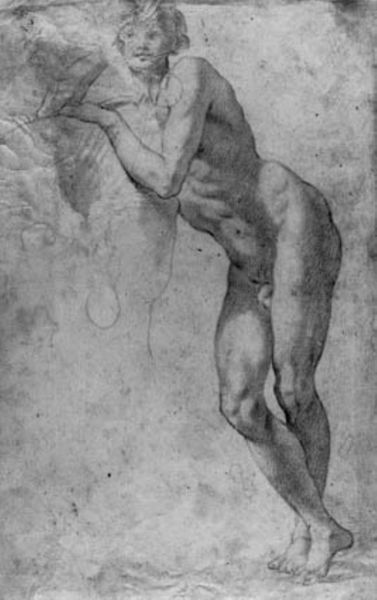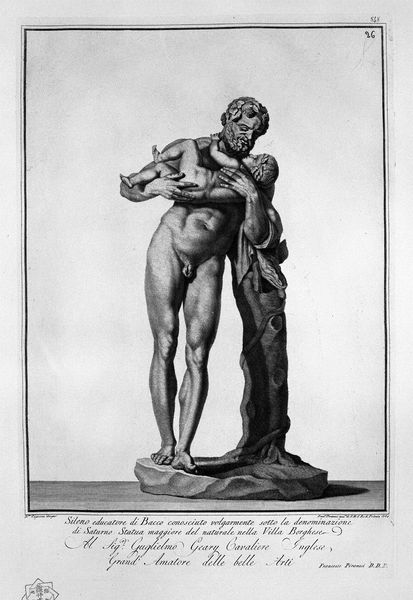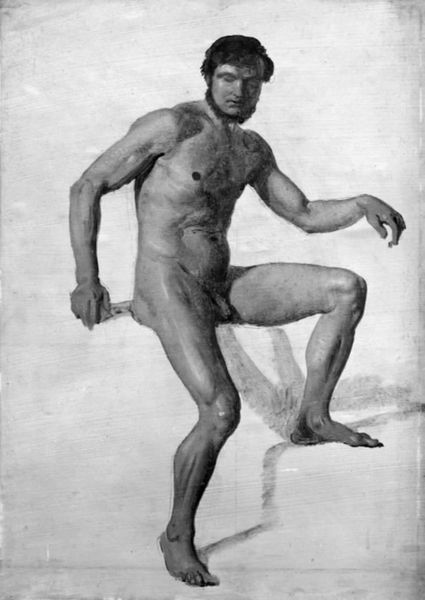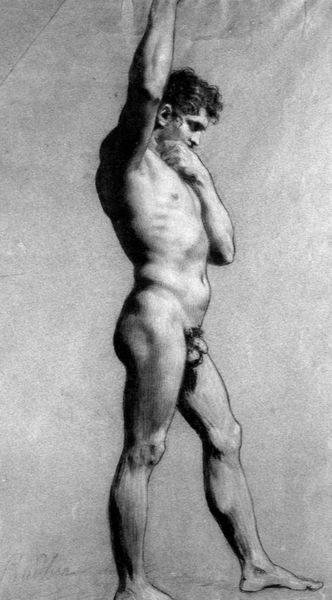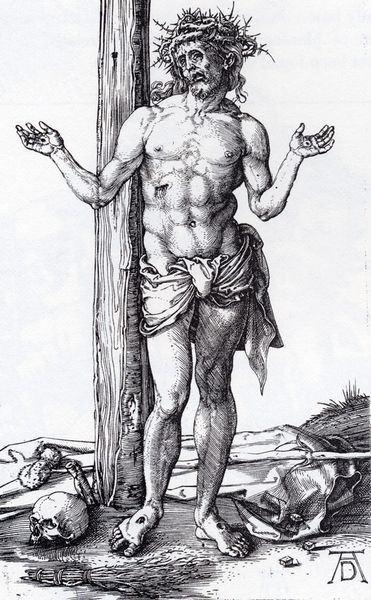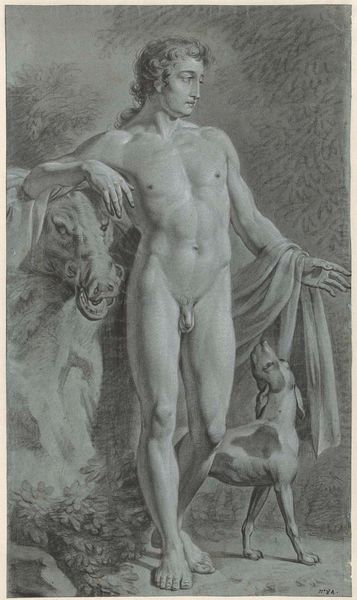
tempera, painting
#
portrait
#
tempera
#
painting
#
figuration
#
11_renaissance
#
men
#
history-painting
#
italian-renaissance
Dimensions: Overall, with arched top and engaged frame, 56 3/4 x 26 1/4 in. (144.1 x 66.7 cm); painted surface 53 3/4 x 23 in. (136.5 x 58.4 cm)
Copyright: Public Domain
Editor: This tempera painting, *Saint Sebastian* by Francesco Botticini, made sometime between 1466 and 1497, portrays the saint tied to a tree, pierced by arrows. The piece is currently at the Metropolitan Museum of Art. What I find interesting is that the expression on his face isn't of pain, more of... resignation? What's your interpretation of this piece? Curator: Well, consider the role of art within religious institutions during the Renaissance. Botticini wasn't simply painting an individual, but perpetuating a specific image of Saint Sebastian. This image, circulated widely, was tied to cultural anxieties surrounding plague and divine protection. Look at the carefully rendered landscape; do you think it offers solace or reinforces a sense of isolation for the saint? Editor: I see what you mean. It’s not just about Sebastian as a person but also about his function as a symbol. The landscape, now that you mention it, feels detached. Like a stage setting more than a place of refuge. Does the serenity depicted relate to the Renaissance focus on ideal beauty? Curator: Exactly! Saint Sebastian was often depicted as an idealized figure, even in martyrdom. This served multiple purposes. It affirmed divine power by showcasing acceptance of suffering, and, not to be overlooked, the paintings fulfilled certain erotic interests of that time. But it’s not just about ideal beauty; consider who commissioned this piece. A wealthy family? A church? Their intentions and the public role they envisioned for the work would heavily influence its reception. Editor: I never considered that! I suppose context completely changes how we perceive art. Curator: Precisely. It's not solely about individual artistic expression but about how art reflects, reinforces, and sometimes challenges prevailing social and cultural values. Editor: I'll definitely look at Renaissance art, especially religious works, with a different perspective going forward. Thanks for clarifying the historical and social dimensions!
Comments
No comments
Be the first to comment and join the conversation on the ultimate creative platform.
